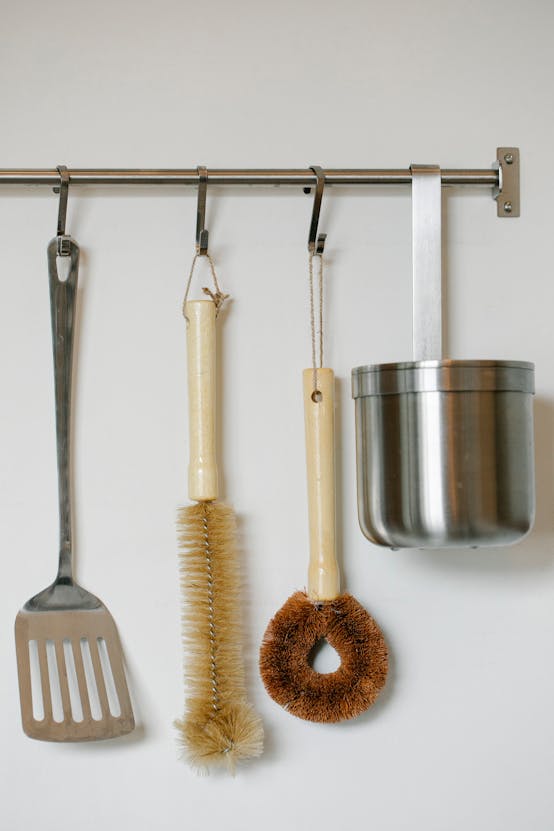Importance of Oven Thermometers
When aiming for cooking accuracy and baking precision, an oven thermometer becomes an indispensable tool. They address one of the most overlooked aspects of cooking: inaccurate oven temperatures. Despite the settings, many ovens can be off by as much as 50 degrees, leading to unevenly baked goods or undercooked meals.
Using an oven thermometer ensures that you achieve perfect results every time. By providing an accurate temperature reading, they allow for better control over the cooking process. This is crucial, especially in baking, where precision is vital. A few degrees can make the difference between a moist cake and a dry, crumbly disaster.
Additional reading : Open shelving vs. closed cabinets: weighing the benefits and drawbacks in your kitchen design
Moreover, understanding the benefits of accurate temperature monitoring can help prevent common cooking pitfalls. For instance, knowing your oven runs hot could save you from unintentionally crisping a roast. With an oven thermometer, you can avoid such mishaps by adjusting temperatures accordingly, leading to dishes that are consistently cooked to perfection.
In the world of culinary arts, where baking precision reigns supreme, such a simple tool ensures success and enhances the cooking experience by safeguarding flavors, textures, and overall dish quality.
Also to read : Essential Tips for Choosing the Perfect Electric Griddle to Elevate Your Family Breakfast Experience
Types of Oven Thermometers
Choosing between digital and analog oven thermometers can significantly impact your cooking accuracy. While both serve the primary function of displaying the oven’s internal temperature, they offer different features and benefits.
Digital Oven Thermometers
Digital oven thermometers are favored for their precision and ease of reading. With clear digital displays, these thermometers often provide accurate real-time temperature readings, which is invaluable for those seeking precise baking precision. Key features to look for include backlit screens, programmable temperature alarms, and wireless connectivity, allowing remote monitoring. Many users appreciate models like the ThermoPro TP27, praised for its long-range wireless capability, perfect for multitasking chefs.
Analog Oven Thermometers
On the other hand, analog oven thermometers are known for their simple design and durability. They are generally more affordable and do not require batteries, making them a reliable choice. Reading an analog thermometer is straightforward: observe the needle or dial to know the temperature. Popular models include the Taylor Precision Products Classic Series, noted for its robustness.
In comparison, digital models often win on convenience, but analog counterparts are preferred for their classic reliability and straightforwardness. Deciding which type fits your needs will enhance your cooking endeavours and ensure meals are cooked to perfection.
How to Use an Oven Thermometer Effectively
Utilising oven thermometers is essential for achieving precise and reliable cooking results. Here are some best practices for their effective use:
Positioning and Calibrating: Proper placement within the oven is critical. Position the thermometer in the centre of the middle rack for an accurate temperature reading. Calibration ensures reliability. To check calibration, place the thermometer in an oven set to a known temperature and adjust accordingly if there’s a discrepancy.
Recipe Adjustments: When your oven thermometer indicates a variance from the set temperature, adapt recipes by altering cooking times or temperatures. This step is crucial in maintaining cooking accuracy and baking precision. Adjust recipes based on thermometer readings to prevent undercooked or overcooked dishes.
Maintenance and Calibration Importance: Regular calibration and maintenance keep the thermometer’s performance optimal. Clean your thermometer occasionally and ensure it’s free from grime for clear readings. Regular checks and calibrations guarantee longevity and accuracy, crucial for successful culinary endeavours.
Incorporating these steps will maximize the benefits of oven thermometers, ensuring consistent, high-quality results in your cooking and baking processes. By mastering these techniques, you’ll optimise temperature management in every dish.
Comprehensive Review of Top Oven Thermometers
Dive into the world of oven thermometers with our in-depth reviews, helping you make informed choices for achieving precise cooking accuracy. We explore both digital and analog models, ensuring you have the best tools for baking precision.
Review of Digital Thermometers
Digital thermometers, equipped with advanced features, cater to modern culinary needs. Models like the ThermoPro TP27, favoured for its wireless capability, allow remote monitoring, a boon for multitaskers. With high accuracy and clarity, digital displays offer real-time temperature data. This ensures dishes are cooked at optimal temps, aiding both novice and seasoned cooks.
Review of Analog Thermometers
Analog thermometers shine in their reliability. Their straightforward design requires no power source, easing usability. Models like the Taylor Precision Products Classic excel in durability and simplicity. Reading them involves watching a needle dial to gauge temp changes.
When choosing between these types, consider your cooking style and needs. Digital thermometers excel in technology and convenience, while analog thermometers bring traditional, dependable performance. Prioritising these factors will lead to more consistent cooking results and enhanced dish quality.
Tips for Achieving Perfect Cooking Temperatures
Effectively managing your oven temperature is essential for achieving culinary perfection. Consistent oven temperatures ensure evenly cooked dishes, enhancing both texture and flavour. Preheating your oven before placing dishes inside is crucial. It helps eliminate initial temperature fluctuations and prepares the oven cavity to the desired warmth, achieving cooking accuracy.
Proper temperature management also entails regular calibration of your oven thermometer. It’s a simple process where you place the thermometer inside the oven and compare the reading with the set temperature. This step is vital as differences can arise over time.
To troubleshoot common temperature-related issues, regularly inspect your oven seal to prevent heat loss. Replace it if it’s worn or improperly placed. Additionally, avoid opening the oven door frequently during cooking, as this causes heat escape, compromising baking precision.
Understanding what to do if your dish cooks unevenly is important. If the tops of baked goods brown too quickly, try placing a baking sheet on the top rack to diffuse the radiant heat. By implementing these techniques and precautions, you’ll master precision in baking and enhance the quality of your culinary creations.
The Impact of Accurate Cooking Temperatures
Understanding the impact of accurate cooking temperatures can transform your culinary creations, ensuring each dish achieves its full potential. But how exactly does temperature affect different types of dishes? For instance, baking requires precise control over heat levels to achieve the desired texture in cakes and cookies. Higher temperatures can lead to overcooked edges while leaving the centre underdone.
Success stories abound in kitchens where accurate oven thermometers have become a staple tool, showcasing remarkable improvements in cooking results. One common tale involves baking bread, where even a slight deviation from the ideal temperature can affect the rise and crust formation. Achieving precise temperatures helps replicate professional bakery standards at home.
Enhancing flavors is another significant advantage of maintaining cooking accuracy. Proper temperatures ensure meats are cooked to the correct doneness, sealing in juices and flavors. Roasting vegetables with precision brings out their natural sweetness without burning the edges.
To achieve optimal results, invest in a reliable thermometer that suits your needs. Using this tool empowers you to experiment with recipes, ensuring temperatures are finely tuned to showcase each dish’s best qualities, transforming you into a more confident and successful cook.


